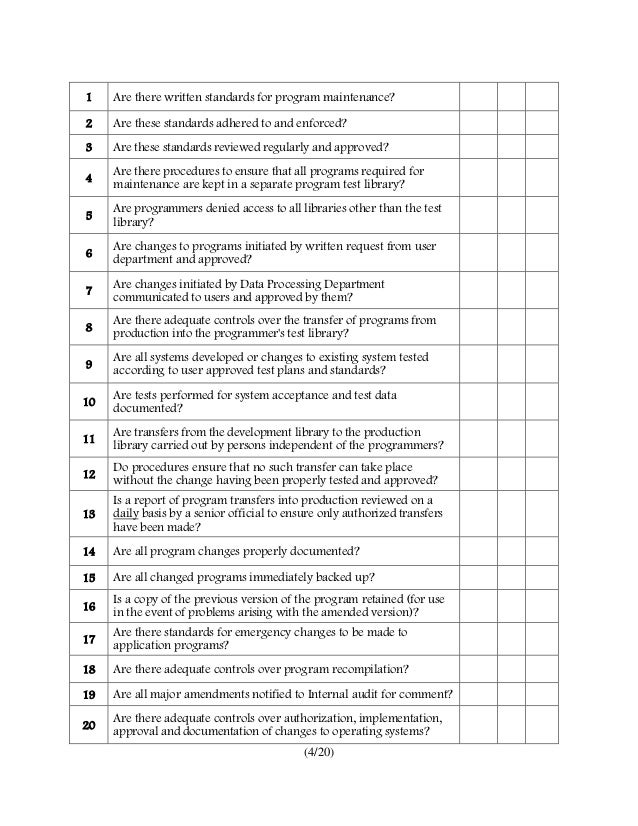Iso Audit Checklist For Training Department Analysis

Department wise and EQHSMS requirement wise audit Questionnaire (more than 900 questions) and internal auditor checklist document kit covers iso quality environment. Feb 20, 2009. Audit: 6.2.1 Human resources — General. Review organization charts, job descriptions and records to verify that personnel whose work affects conformity to product requirements are competent to perform their work assignments based on: __ appropriate education. __ experience. Gap analysis for transition from OHSAS 18001 to ISO 45001 Clauses of ISO 45001 Clauses of OHSAS 18001 Evidence required Action needed The HSQE Department Ltd. ISO 9001 Internal Audit Sample Questions. Has the organization evaluated the effectiveness of training provided? Has the organization ensured that its employees are aware of the relevance and importance of their. Has the organization analyzed appropriate data to determine: suitability and effectiveness of the quality.
• Best Manual Deals • $ 3,985.00 $ 3,549.00 • $ 2,995.00 $ 2,689.00 • $ 1,995.00 $ 1,859.00 • $ 695.00 $ 595.00 • Business Manuals • $ 595.00 • $ 595.00 • $ 595.00 $ 535.50 • $ 595.00 $ 535.50 • $ 595.00 $ 535.50 • $ 595.00 $ 499.00 • $ 595.00 $ 499.00 • $ 595.00 $ 499.00 • $ 595.00 $ 299.00 • $ 595.00 $ 299.00 • Product Categories • • • • • • • • • • • • • • • • • • • • • • • • • • • • • • • • • • • • • • • • • • • • • • • • • • • • • • • • • • • • • • • • • • • • • • • • • • • • • • • • • • • • • • • • • • • • • • • • •.
As with many parts of the ISO 9001:2008 or ISO 9001:2015 quality standard, the training requirements were designed to help improve the organization’s quality. The standard required employees to be trained with the knowledge and skill necessary to do their jobs with quality. But the added requirement is to verify that the training provided was effective (see #3 below).
The Settlers 7 Offline Crack Mac Os. Here is a summary of the training requirements from section 6.2.2 Competence, awareness and training. • Define the knowledge and skill needed for each employee to conduct their job. • Deliver training or other learning activities to develop the required knowledge and skill. • Provide a way to prove whether the training was effective (test for understanding) • Ensure employee awareness of how their activities contribute to the quality objectives.

They should understand the relevance and importance of their role. (Do they know what a QMS is?) • Keep training records and records of employee education, skills and experience. Once an organization determines how to organize a training program to meet these requirements, they must find a way to keep track of the training schedules, evaluation activities and training records for every employee. Regardless of the size of the organization, most find these administrative demands very time consuming and difficult to maintain so the information is easily available during audits.
Need Guidance? ISO 10015 Quality Management-Guidelines for training.